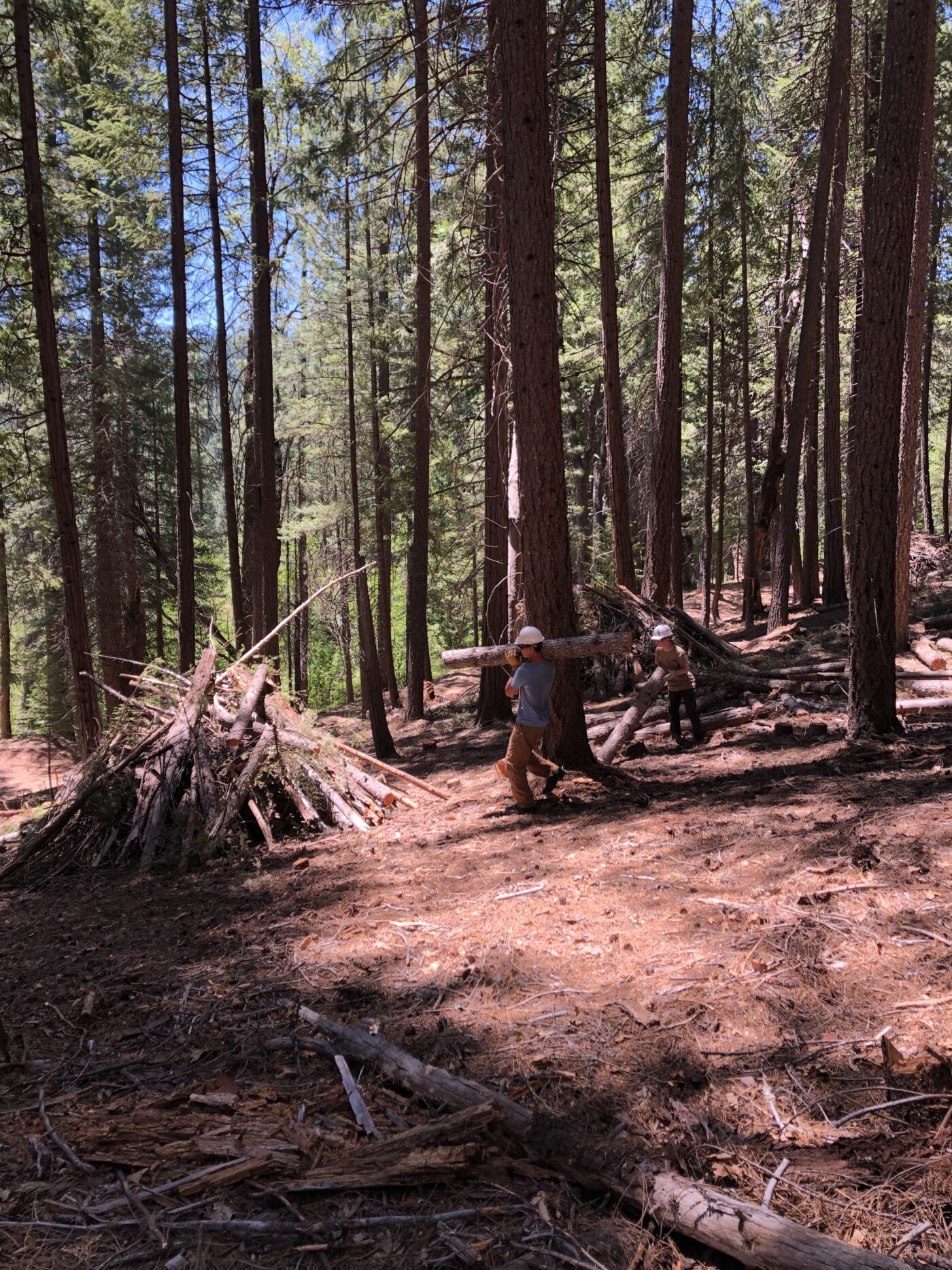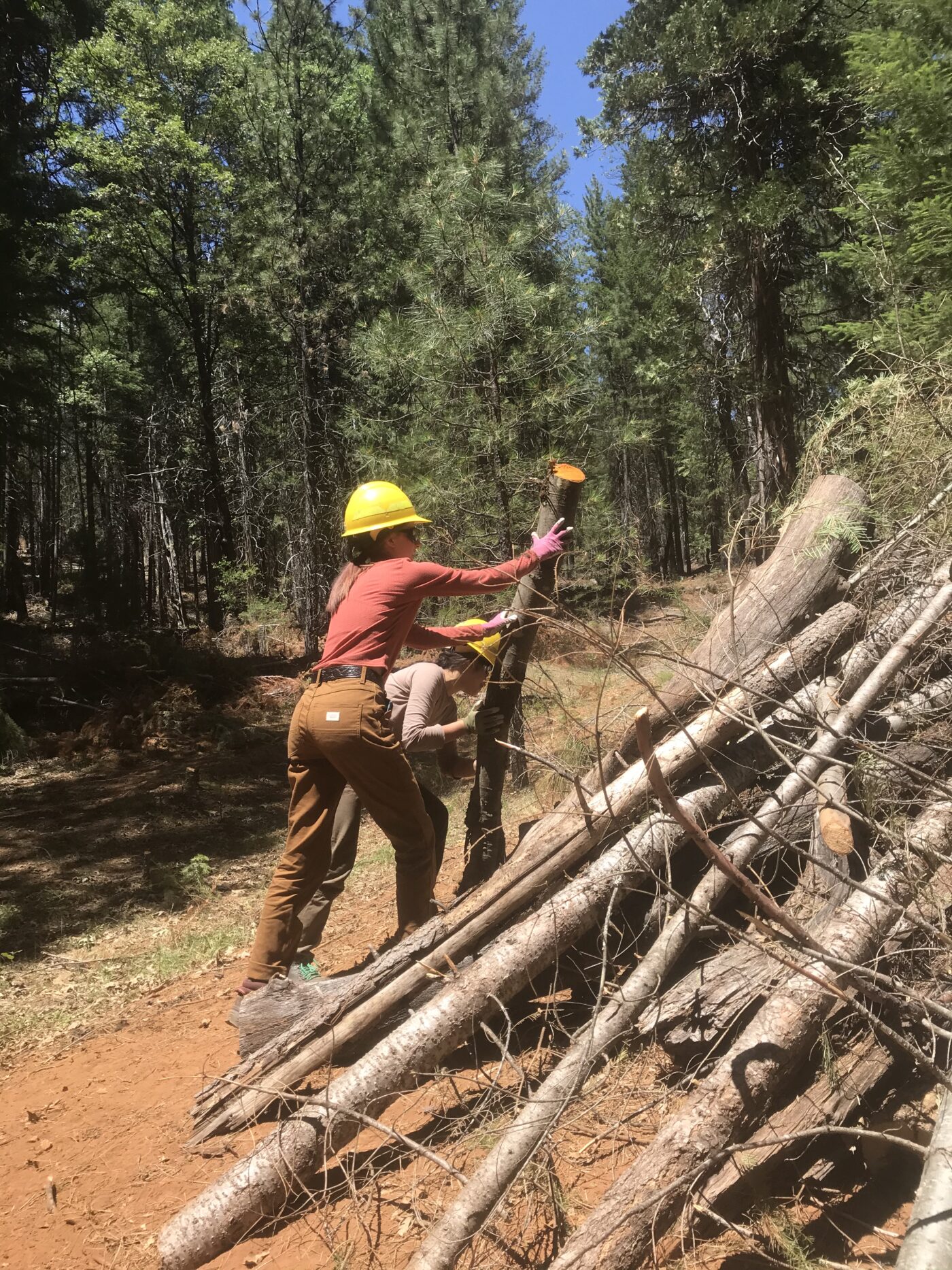
Last summer, in 2020, the Sierra Institute for Community & Environment youth crew, Plumas Conservation Restoration and Education in Watersheds (P-CREW) worked in Butterfly Valley, CA. This 500-acre valley is managed by the Plumas National Forest and is home to the Butterfly Botanical Area which was designated in 1976 as a protected area due to its remarkable and diverse plant life, which includes pitcher plants and other novel species.
Intermingled in the forested landscape and botanical gardens that make up Butterfly Valley is a community of houses, farms, gardens, and community life. This makes Butterfly Valley an important Wildland Urban Interface (WUI) in the greater Quincy community. A WUI is a zone of transition between built community spaces with structures and uninhabited land. As the U.S. Fire Administration states, “It is the line, area, or zone where structures and other human development meet or intermingle with undeveloped wildland or vegetative fuels.”
Wildland Urban Interface areas are specifically at risk of being hit with high-intensity wildfire and the potential loss of homes, due to the nature of heavy fuel loads so close to human structures.Thus, fuels reduction and forest health measures in these areas are of special interest to both governmental and local agencies, along with private landowners and other stakeholders to protect natural habitat and human settlements.
Funded by the National Forest Foundation’s Matching Awards Program, P-CREW was able to work two and half weeks in the summer of 2020, reducing fuel loads to improve forest health and reduce the risk of structural and high-intensity fire in the WUI of Butterfly Valley.
A total of 24 urban and rural teen crew members and 4 crew leaders, worked on the project over the course of the summer. They created burn piles through hand thinning and piling trees less than 14 inches in diameter, and removed downed trees from the forest floor.
By supporting fuel reduction efforts and thus supporting forest health and fire management efforts this project also supported the protection of sensitive native plants, animal species, cultural resources, and water quality for the Feather River Watershed.
While the teen crews helped reduce the threat of high-intensity wildfire in a Wildland Urban Interface, they also learned the importance of the project from the Plumas National Forest Fuels Planner. This boots-on-the-ground experience taught them the different aspects of fire science and the various effects, both positive and negative, that fire has on our forest and ecosystem health as well as different management techniques.

A big thank you to the National Forest Foundation for providing the funds to make this project a reality and a success. In total, our 2020 P-CREW season supplemented 451 burn piles, built 34 new burn piles, cleared 130,000 square feet of material, and created 20-foot buffer zones on either side of 5,230 plus feet of road and property line in Butterfly Valley. They also enjoyed cold sports drinks, delicious tuna salad and dozens of homemade cookies from an appreciative neighbor.
Our 2021 season of P-CREW is just around the corner. Season 1 starts on June 14th. To find out more about P-CREW check out our website at https://pcrew.sierrainstitute.us/.

